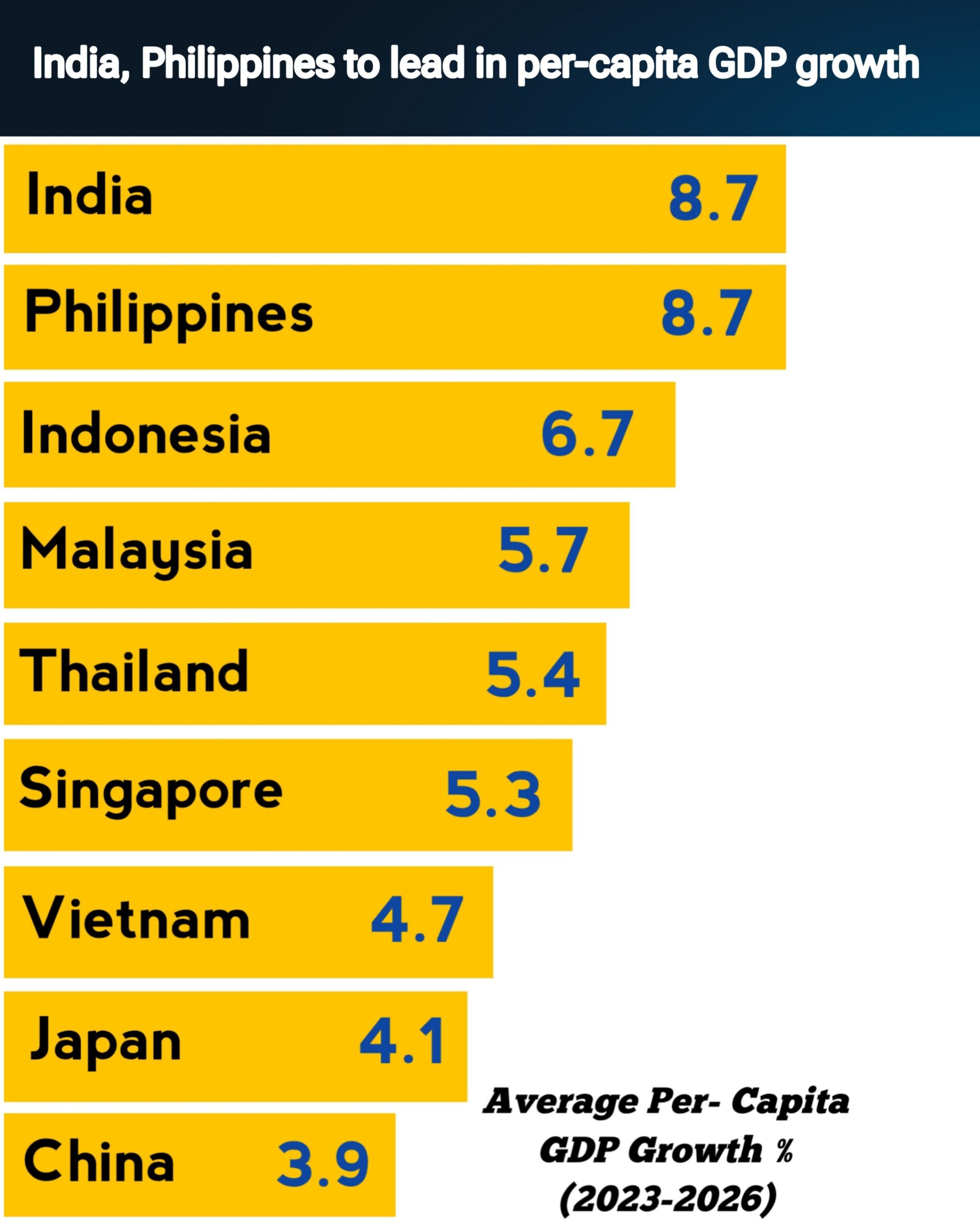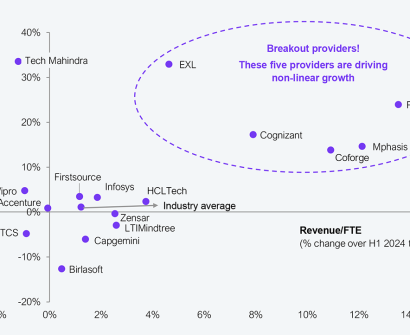Currently Empty: $0
India, Philippines to lead in per-capita GDP Growth

India and the Philippines are positioned to lead Asia in per-capita GDP growth from 2023 to 2026, as highlighted in a recent economic study. Both nations are expected to achieve an impressive average annual growth rate of 8.7%, driven by a combination of demographic advantages, robust domestic demand, technological progress, and increased investments.
Key Factors Driving Growth:
- Young and Dynamic Populations:
- Both India and the Philippines have young and growing populations, which provide a significant boost to their labor forces. A larger working-age population contributes to increased productivity and economic output.
- Expanding Middle-Class Consumers:
- The rise of middle-class consumers in these countries is fueling domestic demand for goods and services. This growing consumer base is a key driver of economic growth.
- Strong Investment Flows:
- Both nations are experiencing robust foreign and domestic private investment flows. These investments are focused on infrastructure, technology, and manufacturing sectors, further supporting economic expansion.
- Technology Boom:
- Advances in technology, particularly in digital transformation and information technology-enabled services (ITES), are contributing significantly to the economic growth of both countries. The IT sector is a major source of jobs and revenue, particularly in India.
In contrast, China is expected to experience a lower average per capita GDP growth rate of 3.9% during the same period. This slowdown is partly due to challenges such as an aging population, declining birth rates, property market issues, and rising debt levels.
Focusing on India, the country’s per capita income is projected to grow nearly 70% to $4,000 by fiscal year 2030, up from $2,450 in fiscal year 2023. This significant increase underscores India’s rapid economic development and its trajectory toward becoming a middle-income economy with a GDP of $6 trillion by 2030.
These projections highlight the shifting economic landscape in Asia, with India and the Philippines emerging as key drivers of growth in the coming years.
Comparison with China
While India and the Philippines thrive, China’s economic momentum is slowing, with a projected average per-capita GDP growth rate of only 3.9% during 2023–2026. This slowdown is attributed to:
- An aging population and declining birth rates.
- Challenges in the real estate sector, which historically contributed to a large portion of China’s GDP.
- Rising debt levels and a shift from high-speed to high-quality growth, focusing on domestic consumption rather than exports.
India’s Economic Growth in Detail
- India’s GDP is expected to grow to $6 trillion by 2030, with per-capita income reaching $4,000 from $2,450 in 2023.
- Sectors driving growth:
- Information Technology (IT): Contributes significantly to exports and employment.
- Renewable Energy: India is investing heavily in solar and wind power to meet sustainability goals.
- Manufacturing: The Production-Linked Incentive (PLI) scheme is boosting domestic manufacturing.
Philippines’ Economic Growth in Detail
- The Philippines relies heavily on:
- Remittances: Overseas Filipino Workers (OFWs) contribute significantly to the economy through remittances, which fuel consumption.
- BPO Industry: A key growth engine that continues to expand due to global demand for outsourcing.
- Tourism and Infrastructure: Programs like “Build, Build, Build” are creating jobs and improving connectivity.
Conclusion
India and the Philippines are poised to redefine the economic landscape of Asia with their rapid per-capita GDP growth. Their success showcases the power of youthful demographics, investment-driven policies, and technology-led growth. If they continue on this path, these nations could play increasingly important roles in global trade and economics, further solidifying their positions as rising economic powerhouses.
Source: GWFM Research & Study








